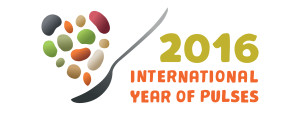Biodiversity exists on farms in many areas: the remnant woodland and grasslands, the sources of the crops we plant and stock we raise and the plants we choose for our gardens and the myriad of life that also inhabit them.
This page has projects that tie farms and farmlands with biodiversity.
Pulses
2016 is the IY to focus on the Pulses group of Legumes grown by farmers. Projects for this are being developed now.
How does IYP fit with an EE or EfS program? My article on this has just been published in AAEE’s OzEEnews March 2016 issue 134 page 3. See also the details in the rest of the magazine.
For ideas on how to introduce pulses and how it ties in with thinking skills, see “From Soils to Pulses” in HEN’s Otherways magazine Jan – Mar 2016 issue 147 pages 29-30.
The 2014 Great Grains project was developed for the IY of Family Farming, to focus on the main farming type in our region. Our current broad-acre food crops have their origins in biodiversity over the ages, but often people do not consider them for discussions and learning about biodiversity. They do however come under the UNDB’s Aichi Target 13 as cultivated plants whose diversity is to be maintained. They also are a part of the 2014 International Year of Family Farms feeding the world, caring for the Earth and the Australian National Science Week theme Food for the future – Science feeding the world.
What are these plants? Cereals, legumes and oil-seeds are on the next Crop page, and there are family tree diagrams for a dozen commonly grown varieties in the Wimmera- Mallee in the Sustainability Section on the Plant Breeding page. The importance of biodiversity in crops can be seen when looking at these family trees for the ‘wild’ varieties that have had input on what we grow today, as well as the varieties from overseas. Modern plant breeding cannot advance without the biodiversity of plants through the ages.
Wimmera Trees along Water Lines
The 2011 project was developed to combine the International Year of Forests and of Chemistry, with the start of the United Nations Decade of Biodiversity. (UNDB) 2011-2020.
During this year, I ran projects at Yaapeet Primary School and a regional one for National Science Week for several lower Wimmera Catchment schools – ‘pH, salinity and the Trees‘ which combined all three IY years.
return to Introduction
update 31/3/2016


